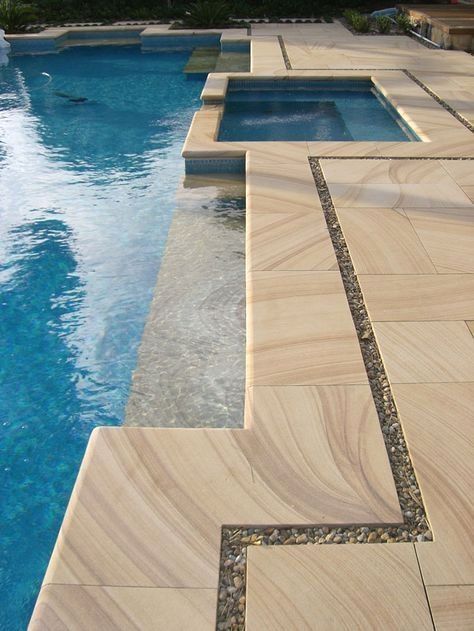Although we feel the beauty of travertine around our swimming pools is unsurpassed these recent discoveries have motivated us to recommend additional maintenance for this surface when installed in conjunction with a salt water pool.
Travertine salt water pool.
Salt water pools contain fewer chemicals than those that use chlorine or other harsh substances to filter and clean the water.
Given that travertine is extremely water absorbent this presents a particular problem in colder climates where freezing occurs and the water trapped in the stone expands.
Even when the stone receives direct exposure to sunlight it will feel cool to the touch when you walk on it with your bare feet.
Salt water pools offer a number of health and maintenance benefits.
Travertine can safely be used around a salt water pool as long as the appropriate measures are taken to protect it.
An impregnating sealer gets down into the nooks and crannies of the travertine pavers to keep the salt water out.
Salt is also much softer on the skin than these types of chemicals and will allow you and your family to be more comfortable during and after a swim.
This maintenance and care will help to preserve the longevity of the patio.
A high quality water repellant impregnating sealer should be used on the travertine giving reasonable protection for 5 10 years.
In most pool areas travertine is exposed to water through the pool itself and natural weather events like rain sleet or snow.
They are impervious to cracking water and moisture resistant but if you are installing travertine next to a salt water pool you should take care to protect the stone with a penetrating commercial sealant.
Travertine is very tolerant of temperature extremes but we recommend choosing a light coloured tile for around pools so it stays cool it the hot summer months.
It is recommended to seal the travertine with a water repellent impregnating sealer to prolong the life of the patio.




























